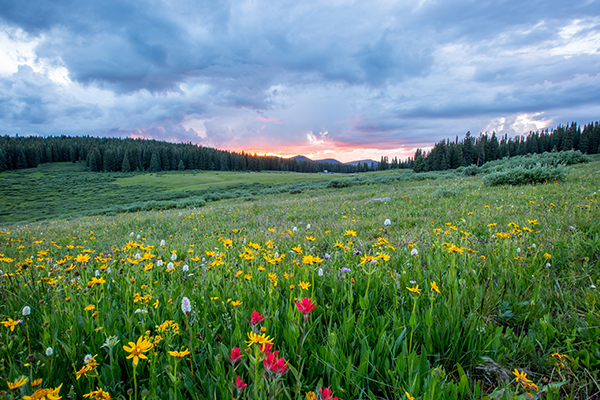
Being outdoors is more important now than ever. As we continue to stay socially distant for the health and wellbeing of our fellow humans, one of the few activities we can participate in is the great outdoors. If you are a nature lover, you’ll find some interesting facts about the wildflower – those you’ve seen out in the wild and those cultivated in your garden.
Most of us have an undeniable love for flowers, its color, and its fragrance. However, have you ever wondered where they come from? Do you think they all grow naturally? In this article, we attempt to explain the difference between the wildflower, a type of flower and plant that grows out in the landscapes, and the one that has been created with the purpose to be cultivated.
What are wildflowers?
Wildflower relates to any flowering plant that has not been genetically manipulated through selective breading. In other words, this kind of plants grows without the intervention of humans usually in natural landscapes.
On the other hand, cultivars are a cultivated version of a plant breed. Usually, they are modified with the purpose to enhance a quality or improve the disease resistance, pests, and changing weather (The Nature Conservancy, 2018).




What about their characteristics?
- It adapts easily to the different soils and weather conditions.
- The wildflower provides food in the form of leaves, nectar and pollen to the insects. This process continues when they pollinate the wildflower, which ends up in new seeds. In other words, these plants contribute to protecting the cycle of life.
- Another great characteristic of the wildflower is that it helps soil to be healthy especially when there is a lot of rain.
- Some types of flowers have longer bloom times in comparison with the wildflower, which makes them more appealing to gardeners and cultivators.
- But not everything is a bed of roses. These plans are thought to be less appealing to insects, butterflies, and bees, which may impact the local diversity.[i]
What about genetics?
- The wildflower promotes biodiversity, which is the foundation for healthy ecosystems.
- It also has a genetic pool that provides an incalculable variety of seeds.
- Cultivars have unique shapes, sizes and colors, which make them super appealing for buyers. Who wouldn’t want gardens fill with exquisite flowers?
- But, since cloning techniques are used to create cultivars there is a lack of genetic variation. This means you can find identical flowers anywhere.
Some facts about wildflower
- Thanks to animals, the wildflower can spread easily and fill up the ground. That’s right, species like mice, rabbits, and deer find their food source in these plants and then scatter the seeds in a natural form.
- Weed is one of the most concerning factors for gardeners. This type of seed is super invasive and can damage the wildflower meadows, which is why it is important to remove all the crops before they spread; otherwise, it will be almost impossible to get rid of.




